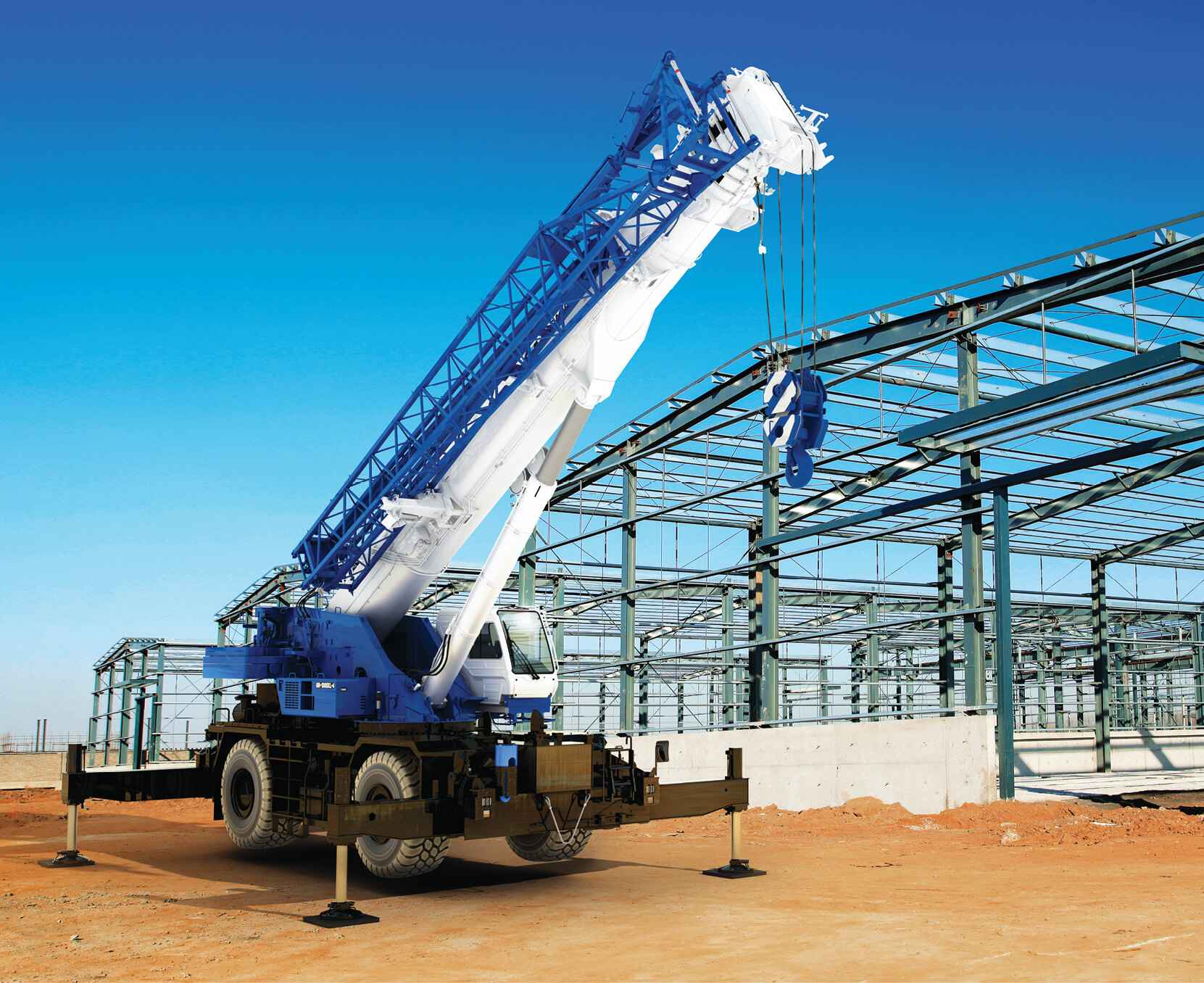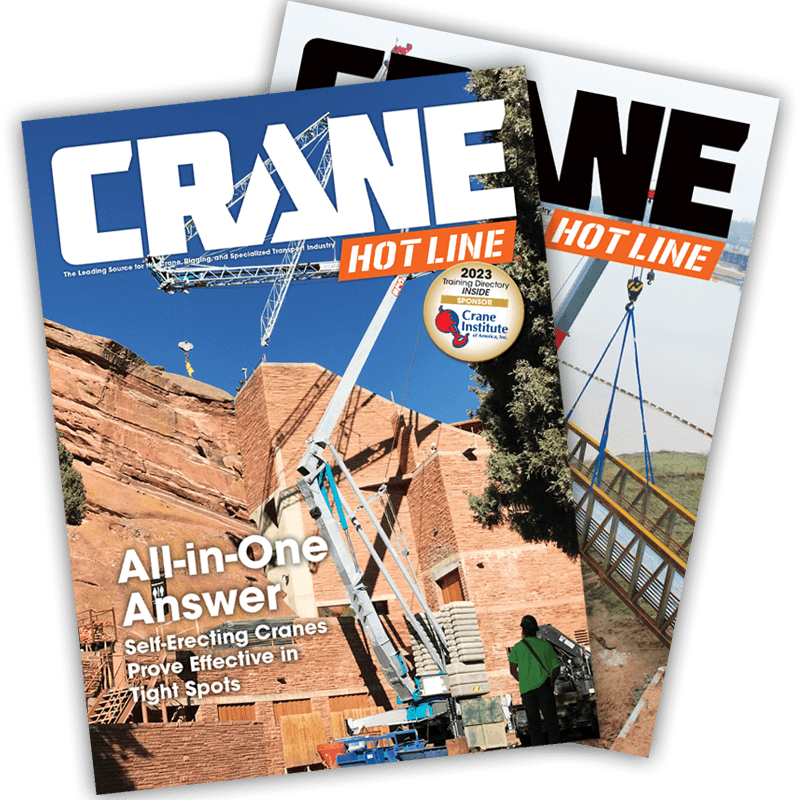Rough Terrain Crane Market Grows with New Models from Tadano, Grove and Liebherr
The outlook for rough terrain cranes continues to be positive,” said Lance Rydbom, vice president of product management & engineering at Tadano. “Infrastructure, wind, petrochemical and oil and gas projects continue to be steady and will require rough terrain cranes to support them. We will see if any effects from factors like tariffs or economic policy arise, but this market should continue to be solid.”
Tadano, Rydbom noted, prepares for growth in the rough terrain (RT) crane market and has the newest technologies to meet challenges for growing fleets. In the development of their latest generation of RTs, the company emphasizes critical needs for operator comfort, reliability, ease of transportation, ease of assembly/set up and cost of ownership.

Grove 50- and 80-ton RTs
Boasting enhanced load charts and a variety of new features, the recently debuted Grove GRT550 rough terrain crane succeeds the manufacturer’s RT550E model while retaining their claim to offering the longest boom in the 50-ton rough terrain class. The new model also utilizes its predecessor’s compact carrier design, and its lightweight features provide for a 65,400-pound GVW rating.
The GRT550’s 128-foot, five-section boom has a 161-foot maximum tip height and can be equipped with an offsettable swingaway extension. The machine features an increased line pull capability compared to the RT550E and requires less line, speeding rigging time.
Power for the Grove GRT550 comes from a Cummins QSB6.7 engine with an ECO mode for improved fuel efficiency. Standard on the model is a new Site Steering mode that simplifies handling, an updated outrigger system with smart monitoring of single-stage outrigger beams and the company’s MAXbase variable-position outrigger system for flexibility and 360-degree load capacities on congested jobsites.
A new cab with high-capacity HVAC has also been developed for the new Grove RT. Visibility is improved, particularly to the boom, and there’s a three-camera system available as an option. In addition, the crane features an adjustable heated seat with armrest-mounted joystick controls and the manufacturer’s new 12-inch CCS 1+ touchscreen display.
Manitowoc also retained features such as remote-mounted filters and centrally located service points to make the GRT550 technician-friendly. Additionally, service and diagnostics features such as the Grove CONNECT fleet management system and the company’s On Crane Service Interface (oCSI) have been incorporated in the new model.
Now available in global markets is the Grove GRT780 rough terrain model. The 80-ton capacity RT replaces the RT770E and the GRT880 in the Grove RT crane lineup. The new model is powered by a Cummins Stage 5 engine.

The Grove GRT780 features a 155.1-foot, five-section MEGAFORM full-power boom with a 33- to 56-foot bi-fold swingaway boom extension capability and has a 220-foot maximum tip height. Versatile counterweight options on the model include 17,500- or 20,500-pound capacities.
Features of the Grove RT include the MAXbase variable outrigger system, a 12-inch CCS 1+ touchscreen display, a wider full-vision tilting cab and a new carrier design. The model is also one of the manufacturer’s first rough-terrain crane to offer the Grove CONNECT telematics and fleet management system, and it is equipped with the oCSI (on Crane Service Interface) to help simplify diagnostics and service.
The Grove GRT780 has a GVW of 99,820 pounds and is under ten feet wide for easier transportation and jobsite maneuverability.
Liebherr 140-ton RT
One of the newest models in the Liebherr rough terrain crane lineup is the two-axle, 140-ton capacity LRT 1130-2.1 powered by a six-cylinder 252 horsepower Cummins engine mated to a Dana six-speed powershift transmission. The crane has a 197-foot telescopic boom that provides for a 279-foot maximum hoist height and a 217-foot maximum radius.

For transport, the dimensions of the Liebherr LRT 1130-2.1 and a folding jib and hook block allow it to travel on low-boy trailers. On jobsites, the crane rides on 29.5R25 off-road capable tires and features all-wheel and crab steering for maneuverability.
Other features of the LRT 1130-2.1 include a standard outrigger monitoring system and the manufacturer’s VarioBase variable support base, which allows each individual crane outrigger to be extended to any length. During lifts, the crane is controlled by a load moment limiter within the company’s LICCON controller that calculates maximum load capacities.
Liebherr also designed the LRT 1130-2.1 to provide for greater operator comfort. The crane features a wide cab that can be tilted backwards when hoisting loads to heights. The RT also has ladders, a large number of handles and an electrically extending platform on the cabin to ensure safe access to the crane, as well as a range of storage boxes for accessories, lifting tackle and support timbers.



